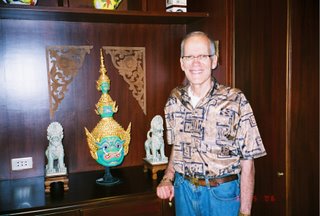Benjamin Grosvenor: Ex-Wunderkind
 |
| Buzz with Benjamin Grosvenor in Singapore |
20th
Singapore International Piano Festival.
School of the Arts Concert Hall.
Singapore. June 22, 2013. Music’s
most famous wunderkind (from German: "wonder child") is Wolfgang Amadeus Mozart, who, by
age 10, was being carted around Austria by his famous father, Leopold, and was
performing his own compositions as well as those of others. Well, he turned out pretty good, but many
other wunderkinds don’t fare so well.
The problem for all of those child prodigies is that they quite soon
grow up, so that they are no longer a “kind,” and what was adorable at age 9,
is just silly at age 20, and what was amazing at age 11, is commonplace at age
21. The trick for all former
wunderkinds, is to remain a “wunder” after they lose their “kinder”
status. Benjamin Grosvenor has done just
that.
Grosvenor, who will turn age 21 shortly, has been playing
the piano to acclaim since his early teens, and would fit anyone’s definition of
a prodigy. He has never been out of the
public eye, but his more recent renown no longer dwells on his still young age:
his playing is so profound and mature that it bears no relevance to his age.
Grosvenor’s Singapore recital did not just engage the audience,
it enthralled it. I have nothing to add
to The Straits Times review, which
follows. Suffice it to say, Grosvenor is not only a wunder, but one who will doubtless continue to thrill
all those privileged enough to hear him.
As the reviewer so aptly said:
“Grosvenor is not the next big thing, he already is the big thing. Step
aside, pianists.”
Pianist Benjamin
Grosvenor has amazing intellect, great technical prowess
Review From:The Straits Times, posted on 26 June at 7:45 AM
By Albert Lin
Many of the world's best musicians have graced the concert
halls of Singapore, yet rarely has one as young as British pianist Benjamin
Grosvenor left such a deep impression. Attending his recital was almost like
experiencing music for the very first time, where his interpretations were the
only ones that made sense.
Unlike more celebrated contemporaries, Grosvenor shows no
interest in wild orgasmic facial expressions or attention-seeking theatrics,
and his demeanour suggested that he was embarrassed to be onstage while
music-making was in progress. He offers only what the music requires - his
soul, mind and dexterous facility.
The textural clarity he brought out of Bach's Partita No. 4
in D only hinted at his immaculate control of the instrument. Each movement was
masterfully poised and his grasp of rhythmic inflections in each dance brought
out the folk-like qualities. Purists would probably scorn his use of pedal, but
here it added more to the performance than it subtracted.
Performances of Chopin's works are often plagued by obscene
sentimentality, yet there was hardly a hint of rubato in his approach to
Chopin's F-sharp minor Polonaise and the Andante Spianato and Grand Polonaise.
The underlying poetry resonates beauty on its own and Grosvenor truly grasped
the spirit of the piano, as the composer's music has oft been described to
possess.
In the F-sharp minor, he generated a warm sonority from the
Steinway grand and dove headfirst into the daunting octaves. The sense of
heroism was overwhelming and the sheer intensity of the repetitive middle
section was suffocating.
The glistening sheen he painted with the opening Andante
Spianato, accompanied by a hypnotic wheeling left-hand figuration, was
juxtaposed with a different approach to the Polish dance in the Grand
Polonaise. While Chopin infuses his polonaises with elements of the military,
it traditionally is a rather noble and courtly dance. This slant allowed the
pianist to extract elegance out of the grace notes that litter the work and
enabled the free-spiritedness of the work to come to the fore.
While Scriabin's works are often characterised by his
obsession with dark magic and sorcery, his earlier smaller works were of
immense melodic beauty. In five of his mazurkas from the Op. 3 and the The Op. 38
Valse, the resemblance to Chopin was striking. Grosvenor not only elicited a
prism of colours from the miniatures, but was also alert to any hint of
eroticism in the music. The thoughtful performance brought the listener through
the development of Scriabin's craft towards an impressionistic mysticism.
Granados' Valse Poeticos and Robert Schulz-Evler's
extravagant "Arabesques" Variations on the Blue Danube Waltz closed
the highly charged recital. In the Granados waltzes, scenes of flamboyant
nature were artfully painted with a keen sense of proportion. For the first
time that night, he allowed a hearty dose of lingering as the works required.
The ceaseless avalanche of running notes in Schulz-Evler's
Arabesques was no match for Grosvenor's gargantuan technical prowess and they
were tossed aside effortlessly. At times, the manner in which the melodic line
was projected above the filigree made it sound like there were three hands
playing.
The appreciative audience gave an enthusiastic ovation, and
the pianist obliged with three encores, including Godowsky's transcription of
Saint-Saens' The Swan and the barnstorming Boogie Woogie Etude by Morton Gould.
Cue flashback of the late Shura Cherkassky's recital here in 1994, perhaps the
last time a pianist astounded with such intellect.
Grosvenor is not the next big thing, he already is the big
thing. Step aside, pianists.




